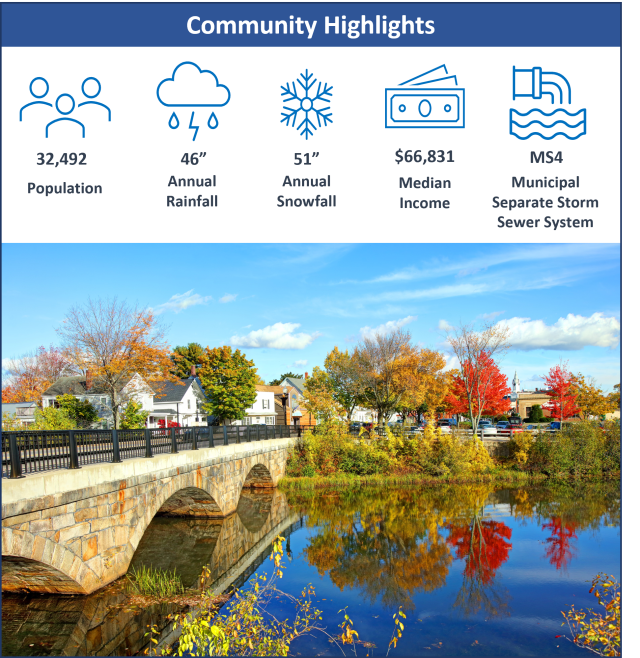Stormwater Planning - Rochester, New Hampshire

Rochester is in southeastern New Hampshire and is known as the “Lilac City.” The community began as an industrial town with a strong manufacturing sector that it continues to maintain today. The city owns and operates a regulated municipal separate storm sewer system (MS4) that conveys stormwater to local waterways that eventually flow into either the Cocheco River or Salmon Fall River, both of which are impaired for E. coli and included in the state’s total maximum daily load (TMDL) or bacteria-impaired waters. Both rivers eventually flow into the Great Bay - one of 28 estuaries in EPA’s National Estuary Program, which aims to protect and improve water quality of the estuary because of its diverse habitat.
The pilot project effort in Rochester led to the development of a long-term stormwater plan, Rochester Long-Term Stormwater Plan (pdf)
| Rochester’s Long-Term Stormwater Planning Goals | Corresponding Long-Term Stormwater Plan Section or Appendix |
|---|---|

Achieve efficient stormwater infrastructure operations and maintenance by developing and implementing a complete asset management program. |
|

Implement a long-term finance strategy to support the stormwater program. |
|

Establish and enforce effective community policies for development and redevelopment that integrate stormwater standards and green infrastructure considerations. |
|

Integrate green infrastructure and effective stormwater opportunities into public projects. |
|

Revitalize the cornerstone waterways of Rochester to meet community needs and provide benefits. |
|
